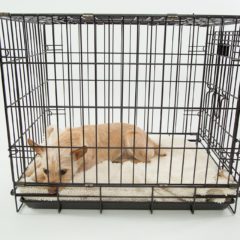One of the most misunderstood commands in dog training is the “come” command. For some reason, we humans realize that we have to teach our dogs how to “sit” and “stay,” but somehow we expect them to automatically know what we mean when we call them to “come.”
I’ve often used this analogy explaining to clients, “Have you taught him what ‘come’ means? If not, you might as well be saying ‘lawn mower’ or ‘banana’! He doesn’t know what you mean!”
Similarly, once the dog is taught the word “come” and knows exactly what it means, humans often make the mistake of forgetting to use the actual word. Instead, they’re calling “Max, Maaaaxxx!” Often, Max is standing over by a bush looking at you as if he’s thinking, “Yes, that’s me.”
It sounds very simple but it can take some effort to get used to. First you have to teach your dog what “come” means, and then you have to remember to use that word when calling him.
The best way to teach your dog the come command is to begin your practice with your dog on a leash. Simply call him to “come,” using a friendly, confident voice, and praise lavishly when he gets to you, “Good boy come!” If he doesn’t come directly to you, gently reel him over to you and then praise.
Once your dog seems to know what the word “come” means, you can graduate to practicing with your pet on a 20’ long lead. This is not a retractable leash, but rather a light weight cotton or nylon lead that is 20’ long. The idea is to pretend that your dog is off-leash, and use the long line as “insurance” to reel him in only if necessary. Make the training lots of fun for your dog by calling him to come in a very excited voice and praising lavishly when he arrives. Be sure to use the word “come” in your praise, as in “Good come!”
Another fun way to practice the come command and get your dog to think of it as a wonderful, fun thing to do, is to play the “puppy ping pong” game. For this, you will need at least two humans and some very small treats that your dog loves. Practice indoors or in a fenced area, taking turns calling him and giving him the treats, and of course praising him for a job well-done. Always end the practice game before your dog loses interest… you don’t want to end up with an off-leash dog who decides he’s tired of the game and chooses not to come to you.
Continue practicing with your dog on the long lead in more and more high distraction situations, always having the insurance that if your dog doesn’t come to you, you will be able to correct, “no” and reel him over to you. Never correct your dog after he comes to you, even if it took awhile.
There are many more things to learn about the come command. Since it is eventually an off-leash behavior, it will be most easily accomplished by first working on basic obedience commands to earn your dog’s respect. If your pet is already in the habit of not coming when you call, you may need to work with a professional trainer to alleviate the problem.
With a little hard work on your part, your pet will soon understand what “come” means. Then, he’ll only look at you like you’re crazy if you keep shouting “banana!”










Leave a Reply
You must be logged in to post a comment.